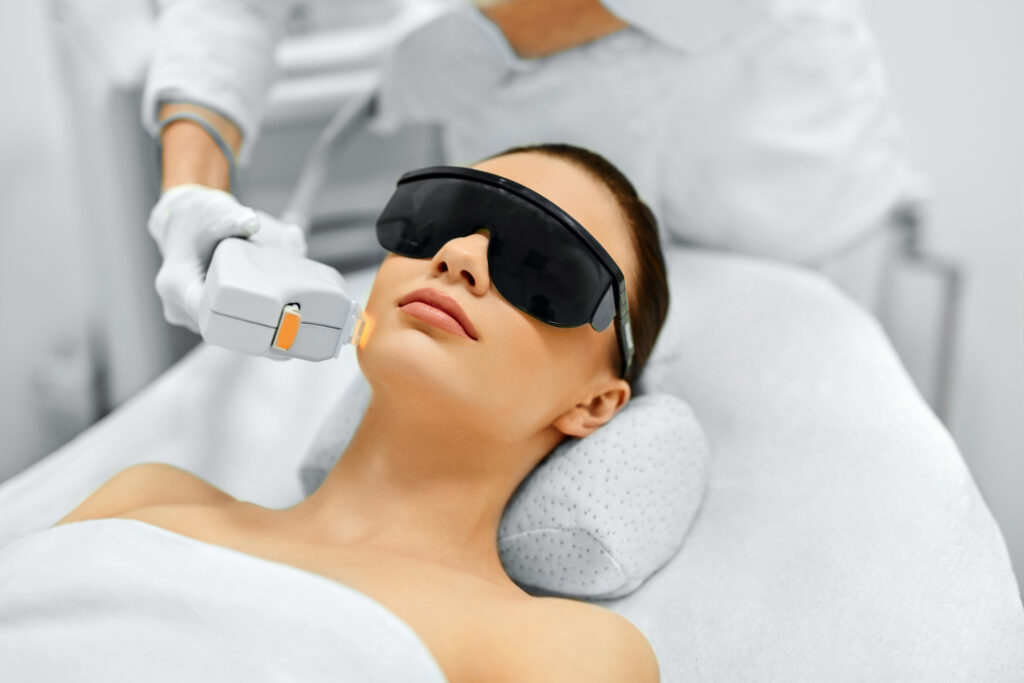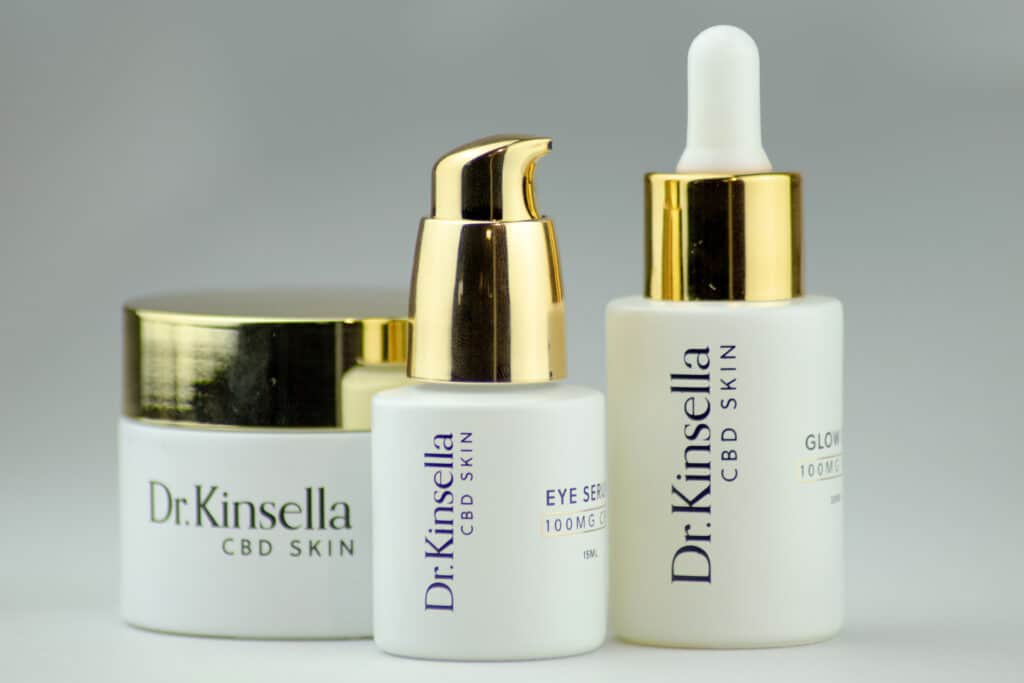GLOW OIL
FACE CREAM
EYE SERUM
Laser Skin Treatments: All You Need To Know
Key points
- Laser resurfacing is a cosmetic treatment that helps to remove skin impurities, including wrinkles, fine lines, scars, age spots, hyperpigmentation, and birthmarks. Laser treatments can be ablative, meaning they remove the epidermis layer by layer, and non-ablative.
- The side effects of laser treatments include the following: redness, swelling, itchiness, pain, blisters, and skin peeling. Some of the more severe side effects include infection, scars, burns, hyperpigmentation, herpes or cold sores, and milia.
- Laser treatments are not recommended for people with active acne, deep wrinkles, or very sagging skin. Before the treatment, you should avoid certain medications, sun exposure, skin peels, and smoking.
- The best way to deal with ageing signs is to prevent them as early as possible and use a proper skincare routine to keep your skin healthy and glowing. Taking proper care of your skin from an early age can help you to avoid the need for aggressive cosmetic treatments in the future.
Laser resurfacing is one of the treatments that help to reduce wrinkles and skin issues, including acne scars and blemishes. This treatment is also known as lasabrasion, laser vaporisation, or laser peel since it works by scraping away skin layer by layer. While laser treatments may be effective, there are a lot of different types of procedures, and they all work differently on your skin. Plus, there are also some underlying risks that you should be aware of before getting this procedure. In this article, we’ll talk about the pros and cons of laser treatments, their types, and what you should expect during the procedure.

Laser Skin Resurfacing: What Is It?
Laser skin resurfacing is a cosmetic procedure that uses lasers in order to make wrinkles, scars, and other skin blemishes less visible. This treatment is also supposed to remove lesions and tighten the skin.
Laser resurfacing works by emitting short, pulsating light beams and targeting all skin irregularities. Laser skin resurfacing procedures remove the skin layer by layer by vaporising damaged skin cells on the epidermis level. The laser also heats up the lower layer of the dermis, which stimulates collagen production, leaving the skin more firm and smooth.
Who Should Get Laser Skin Resurfacing
You may be a candidate for laser skin resurfacing if you have the following skin conditions and blemishes:
- scars or birthmarks
- acne or chickenpox scars
- skin hyperpigmentation
- age spots, liver spots
- fine lines, wrinkles in the sensitive areas of the face such as under the eyes, forehead, and around the mouth
- enlarged oil glands on your nose
You may also consider getting a laser resurfacing if your skin is sun-damaged or non-responsive after a facelift.
The best season to get any laser treatments is autumn. This is because the laser makes the skin very sensitive to environmental stressors, including sun exposure, for a year after the procedure. That’s why many skin care professionals recommend doing laser treatments during autumn or winter, as this ensures that your skin stays out of the sun as much as possible. It’s still recommended to wear sunscreen every day regardless of the season.
Who Should Avoid Laser Resurfacing
Laser resurfacing is not suitable for everyone. For instance, you may want to look for alternatives if you have active acne, deep wrinkles, or very sagging skin. It also may not be the best treatment for people with very dark skin because it may cause hyperpigmentation. Laser resurfacing is also not the best option for stretch marks.
Types Of Lasers Used For Laser Resurfacing
There are different types of lasers that target different skin issues, and you may choose a suitable option depending on what skin issues you want to treat. Some of the popular varieties you’re likely to come across are:
CO2 Laser Resurfacing
These lasers are usually ablative, meaning they remove the skin layer by layer. CO2 lasers are used to treat wrinkles, scars, warts, and deeper skin flaws. The recovery typically lasts about 2 weeks.
Erbium Laser Resurfacing
Erbium lasers can be both ablative and non-ablative. They are used to manage moderately deep lines and wrinkles on the face, hands, and decollete area, as they promote collagen remodelling. Erbium lasers come with fewer side effects when compared to CO2 lasers, as they cause minimal burning of the surrounding tissue. These laser types are commonly recommended for people with darker skin tones.
Intense Pulsed Light (IPL)
Technically, IPL treatments are not lasers, but they are used as lasers to treat several skin concerns. They work by using light energy that targets a certain colour in your skin. IPL treatments are used for sun damage, scarring, vascular lesions, acne, rosacea, birthmarks, and hyperpigmentation. They are also used to remove unwanted hair.
Fractional Lasers
As the name suggests, fractional lasers target specific parts of the skin at a time by breaking down laser energy into thousands of small beams. Fractional lasers are used to treat different age-caused imperfections, such as hyperpigmentation and wrinkles. They also remove acne scars. These lasers can be ablative or non-ablative.
Pulse-Dye Lasers
Pulse-dye lasers are sometimes called vascular lasers. They are usually non-ablative. They work by heating the skin and absorbing the pigments. Pulse-dye lasers are a common choice for treating skin issues related to blood vessels, such as redness, hyperpigmentation, broken capillaries, and rosacea.
Laser Treatment Side Effects
Any type of laser treatment requires a lot of care beforehand and afterwards if you want the procedure to be successful and have years-long results.
Before The Procedure
If you decide to undergo a laser resurfacing treatment, you should avoid medications or supplements that impact blood clotting, including aspirin, ibuprofen, and vitamin E, for 10 days before surgery. It’s also recommended to stop smoking for two weeks before and after the procedure because it affects the healing process. You may also be prescribed antibiotics and antiviral medication beforehand to avoid infections. You should also avoid tanning and facial peel procedures about a month before the treatment. You should not use any medications that cause photosensitivity for at least 72 hours prior to treatment.
Keep in mind that you may experience some pain during the treatment, depending on the depth of the blemishes and the area the treatment targets. Deeper ablative lasers may require some local anaesthesia, while others can be performed only with a numbing cream.
After The Procedure
After laser resurfacing, your skin will be swollen for some time. You may also feel itchiness, burning, or stinging sensations for a few days after treatment. You will notice your skin become dry and start peeling 5-7 days after the treatment. Your skin is also likely to be slightly red for up to 2-3 months. But the redness may also remain for up to six months, especially in people with fair skin.
It’s important to use a “broad-spectrum” sunscreen after treatment, both for people with fair skin and darker skin tones. You should also generally avoid direct sun exposure, especially during peak hours.
Laser Skin Resurfacing Complications
As with any cosmetic procedure, laser resurfacing comes with risks and possible after-treatment complications. Potential risks of laser resurfacing include:
- Burns from the laser’s heat
- Scarring
- Changes in skin pigmentation
- Recurring herpes and cold sores
- Bacterial infection
You may also notice milia after the procedure, which are small white bumps on the skin. Sometimes, hyperpigmentation may appear as a result of the procedure, as laser resurfacing makes the skin very exposed and vulnerable.
Prevention Is Key
The best way to avoid the need for invasive and expensive cosmetic treatments is to prevent ageing signs. That’s why a proper skincare routine is crucial, as it not only minimises skin imperfections but also supports healthy and glowing skin. The biggest misconception about anti-ageing products is that you should apply them when ageing signs start to appear. But in fact, when you start using these products earlier, you can postpone the appearance of wrinkles, fine lines, and dark spots.
Skincare products by Dr. Kinsella are unique and effective in reducing ageing signs and improving your skin’s overall condition. Made with premium-quality ingredients, these products deliver visible effects in very little time. We suggest combining the glow oil with eye serum to reach that firm, revitalised look for your skin. Top that with an anti-ageing face cream to enrich the skin with the best active ingredients and keep it moisturised and soothed.

FAQs
Is laser treatment good for the face?
Laser skin treatments can help remove different skin imperfections, including wrinkles, age spots, scars, and saggy skin. However, laser treatments are more aggressive and should be used as a last resort. It’s better to start targeting ageing signs from an early stage and use proper skin care products to prevent skin issues in the first place.
How long does the face take to heal after a laser?
The amount of time your skin will need to recover from laser procedures depends on how deep the blemishes are and what area of the skin the laser needs to target. Usually, non-ablative lasers don’t require you to get any downtime, but ablative lasers might require three weeks of recovery.
What are the side effects of laser treatment on the face?
After laser treatments, your skin will be swollen and red. You can also experience some itching, pain, and burning sensations. It usually takes a while for these side effects to fully go away. More dangerous side effects include infections, hyperpigmentation, and scarring.
Can lasers ruin your skin?
Laser treatments come with side effects and potential risks, just like any other cosmetic procedure. Lasers can leave some burns and scarring on your skin as well as cause infection, herpes, and cold sore breakouts.
What does your face look like after laser resurfacing?
After laser resurfacing, you should expect your skin to be swollen, red, and sensitive. You may also feel a burning sensation, itching, and stinging. Depending on the treatment you undergo, your skin may even look raw, release a yellow liquid, and even form blisters.
